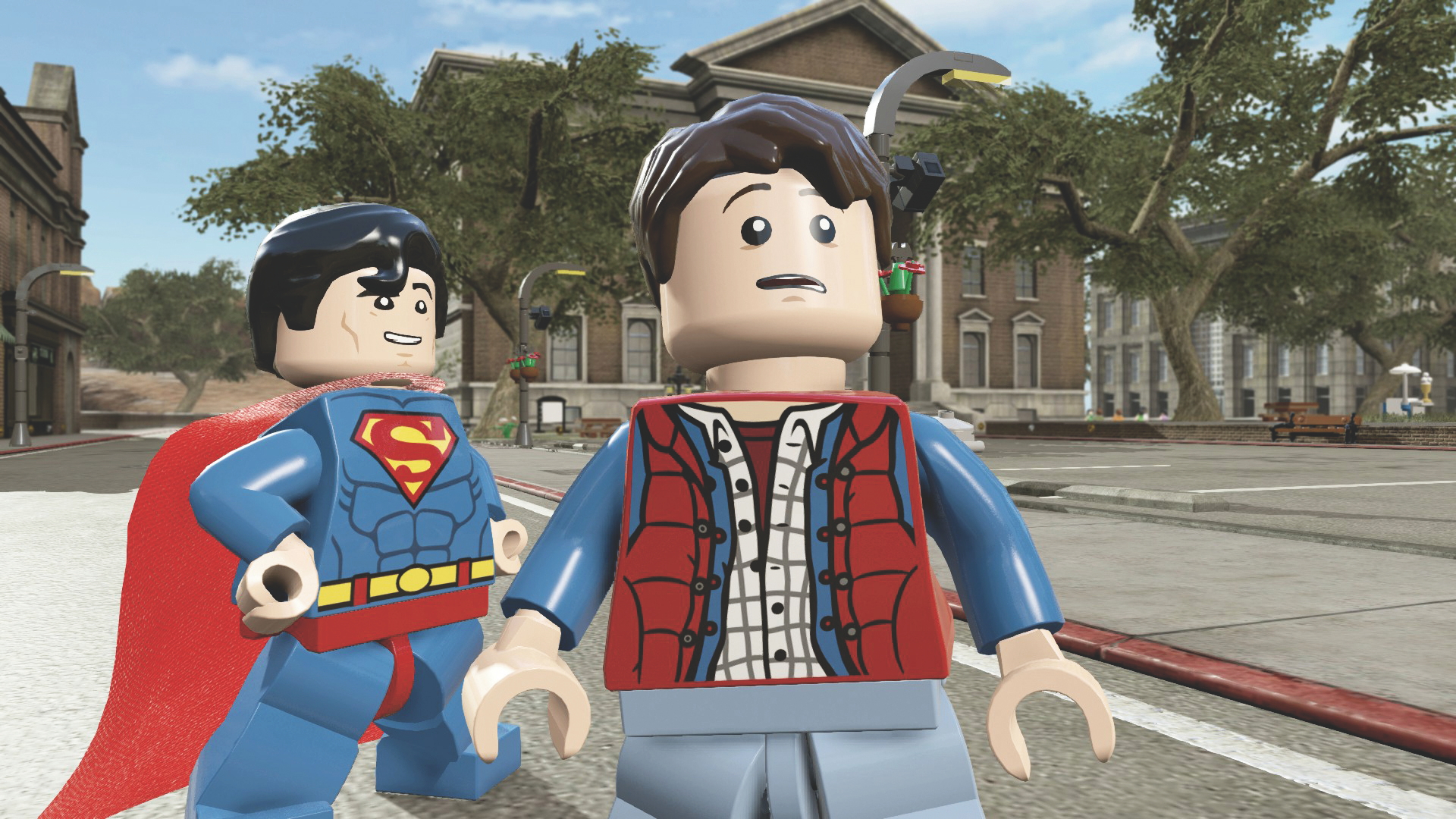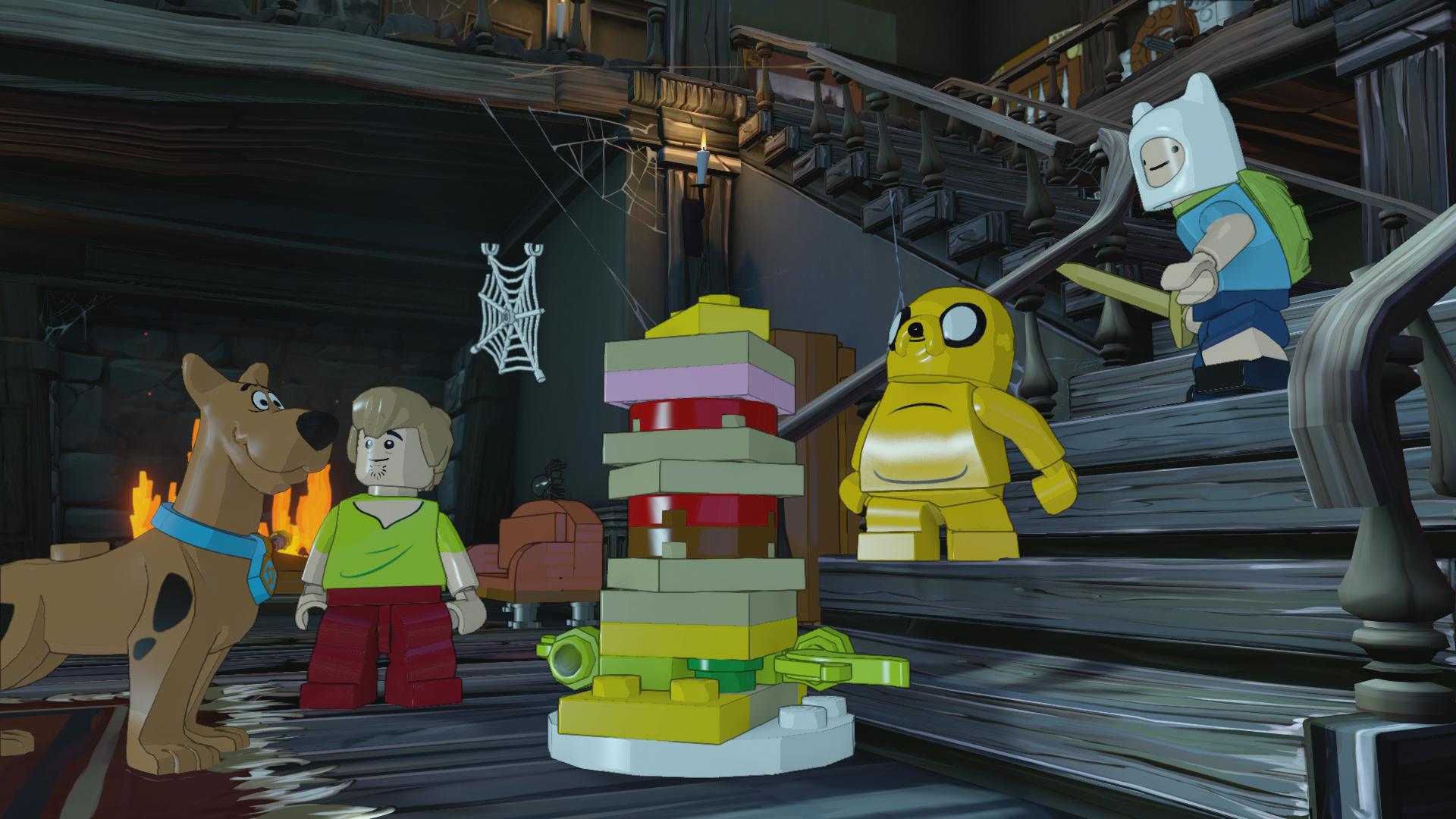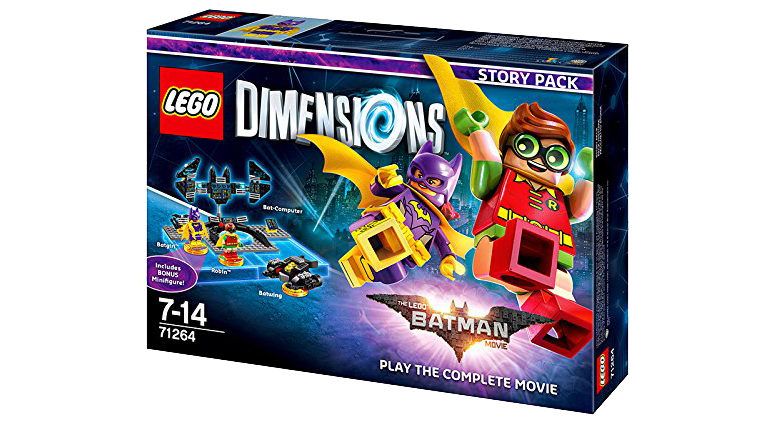Written off as shallow, Lego Dimensions gives invested players a surprisingly deep end game

According to my Xbox One’s stats, the game I’ve spent the most time playing isn’t something you’d expect, like Destiny or Forza Horizon 2 or FIFA 16. It turns out the game that’s held my console’s disc drive hostage for longer than any other – more than 150 hours and counting – is Lego Dimensions. This may come as a surprise to you, because when it was released Dimensions didn’t set the charts alight or have frantic parents kicking in shop windows to secure a copy for their beloved sprogs. Yet I’ve fallen head over heels for this game, and it’s shown no sign of losing my interest.
There are plenty of reasons for this. Most notably, Lego Dimensions has a hidden depth that most people don’t know about. It’s understandable: the toys-to-life price tag of the game put a lot of gamers off and many of them, even those who’d consider themselves fans of Traveller’s Tales’ other Lego games, decided it wasn’t worth the investment. Those who do take the plunge, however, will find the biggest, most detailed, most varied Lego adventure TT have made to date.
The main story mode is just the beginning. Granted, its 14 levels are packed with pop culture references, hilariously daft dialogue and clever puzzles, and some of the franchise mash-ups contained within are ingenious. There’s nothing quite like having Gandalf team up with the Ghostbusters to fight General Zod, or seeing GLaDOS from Portal taking on a surprise cameo from a classic movie I won’t spoil here. This mode, though, takes up a mere 15 hours of game time (if you don’t count going back through it to get all the hidden unlockables). What really makes Lego Dimensions a special game isn’t the story mode. It’s everything else.

Each of the 14 franchises represented in the game has its own ‘adventure world’, which can be accessed by placing a character from that brand on the Lego Toy Pad base. Each location is a large open-world area that can be explored from top to bottom, and they’re all stunning. Each is crammed with even more nods and winks to their respective licences, and contain different building quests and missions from supporting characters who don’t appear in the main story.
Take the bucolic Lord of the Rings adventure world, one of three that’s available as part of the base game and therefore doesn’t need any extra purchases to access. It took me six or seven hours just to play through this single area and clear it 100%. One minute I was helping Sam catch trouble-making Hobbits in the Shire, the next I was accompanying Gollum/Smeagol up to Mount Doom to throw a ‘practice’ version of the One Ring into the lava. Then I had to gather enough studs to help rebuild iconic landmarks throughout Middle-earth.

What really strikes you throughout this is the nerdy level of authenticity. Different tracks from the film trilogy’s soundtrack fade in as you travel from the Shire to the Argonath to inside the Mines of Moria, and you can spot loads of familiar faces from the series.
There’s plenty to do in the three provided adventure worlds, then, though it is hard to overlook that each – The Lord of the Rings, DC Comics and The Lego Movie – has had a full-fat Lego game of its own in the past. Where it starts to get really interesting is when you finally make the decision to step over the threshold and embrace the dreaded ‘sold separately’ realm by buying some of the extra figures and level packs. Every time you buy someone from a new franchise you aren’t just getting that character in playable form, you’re also getting access to their adventure world, meaning another 6-7 hours of open-world exploration in a brand new environment. The result is bite-sized chunks of licensed Lego gaming, some of which I’d been dreaming about ever since Lego Indiana Jones was released back in 2008 and showed us that most things work better in plastic.
Weekly digests, tales from the communities you love, and more

Buy and scan Marty McFly or Doc Brown and you’ve got the Lego Back to the Future game many a gaming forumite fantasised over back in the day. Get Homer, Bart or Krusty and you’ve a whole Lego Springfield to explore. Or buy the recently released Gamer Kid figure to unlock a world dedicated to classic arcade games, complete with a Rampage-themed street and an entire Marble Madness course to drive a car down. The Doctor Who set alone is better than any other Doctor Who game ever released.
What’s seemingly gone unnoticed among games critics is just how far Traveller’s Tales have gone to make sure each licence feels authentic. It’s relatively well-known that it secured a number of original actors to record new dialogue: Peter Capaldi has provided some hilarious new lines for the Twelfth Doctor, Chris Pratt reprises both his Lego Movie and Jurassic World characters, and TT even got Michael J Fox to voice Marty McFly, something Telltale wasn’t able to do for its own Back to the Future game.

What’s been less documented is the cross-licence interactions. Loads of this new dialogue is uniquely triggered when a character is spawned alongside another character or vehicle. Put the Twelfth Doctor in Scooby Doo’s Mystery Machine and he’ll quip: “The only mystery is how this thing passed its MOT.” Spawn Marty McFly next to Bart Simpson and he’ll give him kudos for being a fellow skateboarder, and ask if he’s tried a hoverboard yet. Half the fun when you buy a new character, then, is trying them out with other heroes and vehicles you own to see how they interact.
There are of course downsides, not least that you’re paying extra for something that many will argue should be on the disc anyway. Considering Lego games have always been known for their huge character rosters – the recent Lego Marvel Avengers has over 200 playable figs – it can be galling to discover you’re expected to hand over extra for all but three of the 44 heroes in this one. But there is at least a physical pay-off if you’re the collecting type. I’ve got the Dimensions bug and the result is a full collection of 41 minifigs (as I write this the last three are still to be released), all smiling at me from my bookshelf. It’s oddly rewarding, especially for a game series that has always had collecting as one of its core principles.

Lego Dimensions will always have its critics, and that’s fine. The toys-to-life gimmick is something that can put people off, and even though the base game has a good 25 hours’ worth of content I get why some wouldn’t want a game they couldn’t 100% complete without forking out extra. But anyone willing to invest in the extra characters and unlock their adventure worlds as a result will soon discover that Lego Dimensions has far more depth than many gamers realise. With not only its story mode but 14 more free-roaming adventure worlds – each with their own missions, collectibles and hidden unlockables – I don’t doubt there’s another 150 hours in there for me to enjoy before I finally emerge, poorer, but richer for it.
This article originally appeared in Xbox: The Official Magazine. For more great Xbox coverage, you can subscribe here.




